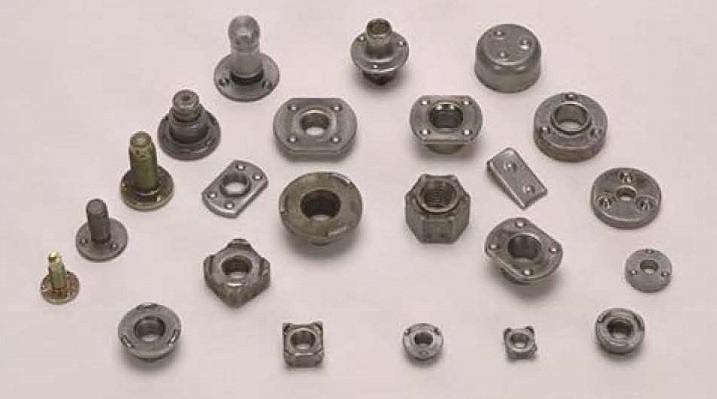Assorted projection welding nuts are shown below. They are being welded in industry every day for cars, appliances, office equipment and many other products. Proper welding is imperative since many important items are being fastened to these nuts.

ASSORTED WELD NUTS
There is very little published data available on the subject of nut welding fasteners. A few articles have been written. Some data is available on the website of fastener manufacturers.
Two articles can be found in:
WELDING JOURNAL: RWMA Q & A JANUARY & MARCH 2011 – “QUALITY OF FORGED PROJECTION WELD NUTS”
The following input was submitted by the author of the above publication.
Published data is very lacking for weld schedules, weld sizes and strength requirements. The following summary of the status may help:
WELD SCHEDULE – Standard weld schedules do not exist as we do not have standard weld nut projection sizes. We also weld to unique materials.
WELD SIZE – 70% of the projection base (diameter, length, width, etc.) will work as a starting point, unless there is other direction.
WELD STRENGTH- This is not addressed in almost every weld nut welding standard. The issue here is that we do not have standard projection sizes. Then we try to weld those nonstandard projections to almost any gauge and strength of material. This makes it hard to come up with any strength standardization.
Normally In-house standards are based upon:
• Typically based on Weld Nut Size (M6, M8, etc.)
• Required push off value increases with weld nut size
• Required value typically is not tied to material gauge
• Required value typically not associated with substrate strength
• Required value not associated with the number of projections
• Assembly drawing is the most common source for this information, if requirement are not in the standard
A properly conducted destructive push-off test (robust test device, etc.) is the best method of determining the integrity of the weld. The results will be more consistent and meaningful than other methods destructive evaluation methods, such as torque.
References: AWS Welding Journal: January & March 2011, Q & A
“Quality of Forged Projection Weld Nuts” by DONALD F. MAATZ JR.
AWS C1.1 Recommended Practices for Resistance Welding

